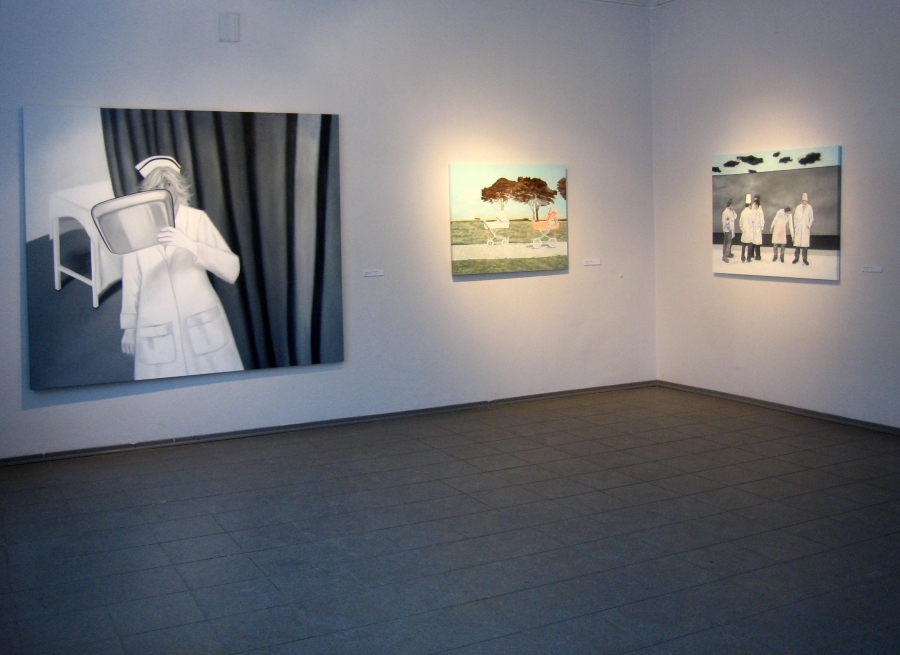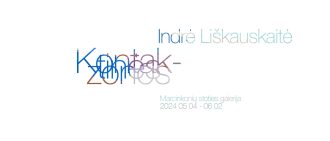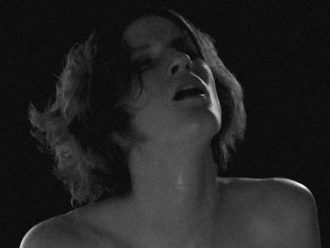I wrote about Saskia Järve first time in 2009 and also made an interview with her. Back then I described her as follows: „There is notable sense of presence in her works, and a certain glimpse to the world, always recognizable, and there is a calm and warm, slightly odd delay and an unexplainable exotic element“. It was a fully personal and poetical reaction, but after talking to Järve herself it appeared that my idiosyncrasy had a basis. Something that I had imagined existed for real. There was a social dimention present in her work. Be it politics or be it guilt – as the hypothetical opposite to innocence. The current exhibition and review deals with this dimension.
„No Innocent Memories“ is Saskia Järve`s third exhibition in a conceptual cycle, opened in 2009 with exhibition „Psychedelics“ (12.10 – 24.10.09, Draakon Gallery, Tallinn) as part of her master thesis in Estonian Art Academy. It was based on social psychology experiments that she performed on herself. Her focus was identity, images of the self and self consciousness that she was searching for by passing psychological tests and using them as empirical material or embodied experience to build ground for the thesis. In Järve`s case, the exhibition format seems to serve her self-search – I really respect that it`s not on contrary. The second exhibition from the cycle –„Taking the Waters“ (09.04. – 21.04.12, Draakon Gallery, Tallinn) – developed from „Psychedelics“, containing many of its works. On theoretical level „Taking the Waters“ was more precisely concentrated on understanding human behaviour through activity and memory, using Adlerian theory of individual psychology.
The title of current exhibition „No Innocent Memories“ is directly based on words of Alfred Adler and it might be the starting point to reading the three exhibitions, which tend to connect into trilogy, of course, it might not – depending on Järve`s further plans. It contains works from both earlier exhibitions – linear development is Järve`s conceptual method – so that her latest works meet with the earliest of the cycle. It can be seen as keeping continuous contact with her initial aims, or setting up a conceptual ground and expanding it. On linear time scale, from the exhibition „Psychedelics“ to „No Innocent Memories“, it is possible to observe Järve`s own behaviour and read her aims in Adlerian way. According to Alfred Adler, an individual mental state has a social background. Thereby the subjectivity of Saskia Järve`s works has a secondary position, while the dominant dimension to be viewed is politics. It is also about the specific way of reading Saskia Järve’s works. Since she is working with memory and its representations, the content has geopolitical grounds, which also opens up in poetical effect of iconographies in her works, read and understood through intuition that has developed in the same geopolitical circumstances where Järve comes from. Sharing the geopolitical background (from Soviet Union to East-European nation state) with Järve, I will introduce a way of reading her works through intuition and personal experience.
The Girl
In all three exhibitions there has been an image of a little girl with a succulent thicket of peas in the background. The girl is holding a huge slice of watermelon in her hands, as if she has just taken a juicy mouthful from it. It is the garden of plenitude in an innocent time, frozen into an icon that penetrates all three exhibitions. It can be seen as a conceptual starting point without self reflection. Be it a hidden or unprocessed memory (or trauma) that might pop up anytime, or childhood, frozen behind the memory in its natural being. Searching for signs of trauma from this picture, we might notice a small cut on girl`s lip. The placing of trauma is the matter of politics, as well as approach to this picture, which needs an adequate location in time and space. I dare to say that the visual language of this picture refers to socialist realism. It locates the girl to the Soviet Union, for example in its prosperous times in the 60s. The rich vegetation, the water melon and shiny hue refer to Chernozem (black soil) belt inside the Soviet Union. Associations like that occur from experience with iconography and origin. I do not know what are the relations between Saskia Järve and Chernozem belt, but I know that she was born in the Soviet Union like me. Our identity and age won`t place the girl into contemporary context, where the fertile nature might be seen as a result of GMO and the general mode of the picture is only about the format and style. This picture is the representation of the past. The question is, how to handle the innocence of this picture as memory – and where would we place the trauma, if it exists? For sure the trauma can´t be found in the picture – the cutting wound in the girl`s lip is not a key that would open the ark of „Soviet horror“ or anything like this. The ideology of East European nation states place the trauma to the whole Soviet period – every small cutting wound is equal to a bullet hole in there. Such placement is mainly based on juridical background of independence, but being served as total truth, it works out as propaganda. The innocence of a memory, an apolitical memory, depends a lot on context – in case of Saskia Järve the context is Cold War and globalized East-Europe of today.
The Boy
A young man with a bow tie standing on the background of a blue-white shore hut/house. He is surrounded with salty ocean air, filled with seagull voices, when facing an ocean view with two women. The dreamy milieu, smelling of freedom, somewhere far behind, in the past that tend to be romanticized – the past of Western history, the history of winners. This atmosphere reminds me Doctorow`s novel „Ragtime“ and short story „A Perfect Day for Bananafish“ by Salinger – pure Western iconography that has become part of me. My intuition locates the picture to the East Coast of the States, southwards from North-Carolina (mainly deciding by the color of water). How to handle this picture – is this a memory or an imagination (or a memory of an imagination)? The Soviet time passed in isolation from the development of Western modernity, which still had an unavoidable but distant effect. The Soviet parallel-modernity was based on constant reacting to Western developments. This distant connection with the West amplified and deformed the displays of capitalism, which melted together with the displays of the past, of the Old World, reproduced by older generations and idealized by youth. East-European hope for the West was a lot based on the idea of reconstructing the past, the interwar period and its values. The picture of the boy is titled „No Innocent Memories“. Comparing the two iconographic pictures – the girl and the boy – it is remarkable that the memories are gendered. The masculine one is stating that there are no innocent memories. As if it also states that all the masculine memories (even if those memories are based on imagination) become history and all the feminine memories will be marginalized and forgotten. As it is done with the Soviet memories.
Surgery and Cold War
The questions of identity and memory politics are viewed through the metaphor of surgery, that is present in Saskia Järve`s works. In her sense, surgery represents a power position that organizes life in an unnatural and violent way. Järve`s exhibition „Psychedelics“ also worked with surgical contrasts – medical or technical intervention was often pointed at female body. Throughout Järve`s works female is exposed through a child character or through a mother-child relation – girl getting medical attention, escaping from surgeon’s cabinet, mother and daughter getting virus protection, etc. It reminds me a bit Marge Monko´s work „Studies of bourgeoisie“. But departing from the two earlier assumptions – the boy and the girl – the difference is based on geopolitics, in the context of opposition between the West and the East-Europe (the 1st and the 2nd world). The sources of this difference reach far back to the past, much further from the Cold War, meeting with orientalism. Regarding the reference to Monko`s work – after Sigmund Freud visited Slovenia in 1898, he made conclusion that people in the south from Austria remain outside the zone of the particular mythology of psychoanalysis, they lack of symbolic authority, they are anal and unanalyzable. To him the hysteric (seen in Monko`s photos) was still a white European woman, as the non-white others were left outside the discourse. For the non-white others, surgery has been an appropriate cure – from one hand as the oldest and most common treatment, from the other hand as the destiny of many racialized (non-white) Europeans in the 20th century (thinking of Dr Mengele´s experiments, for example). It could be said that the girl from Järve`s picture is in struggle with surgery as any other non- or East-European during the history. Or it`s the symbol of Post-Soviet struggle with Westernization? Unfortunately, the latter is a lost battle, if it has ever existed. East-Europe has become a part of the collapsing West, an empire that is constantly in war – not here, but overseas. We don`t know what has happened in surgeon´s cabinet Nr. 219, but we see blood stains on the door and the doorknob, as well as the shadow of escaping girl. We don`t know, if the Eastern girl was transformed to the Western boy (on the picture „No Innocent Memories“ there is also number 219 behind the boy) or if she escaped barely with a trauma! The gang of smoking men under dark clouds, looking like a mixture of butchers and doctors. One of them has a red cross on his sleeve. Hybridity as insecurity! Obviously there is war going on! Contemporary war, mixed with history that still determines international relations of nowadays. The picture „Virus Protection“ consists of tension between safety and threat. The atmosphere of Cold War reminds the nuclear war survival manuals. There is a bird in foreground, and its shadow slipping over the two steaming cups. The windy background there is like a sea full of sailboats, or is it rash on the body of this painting. It is the embodiment of a pre-catastrophic moment. In the picture „Hail on His Birthday“ the catastrophe has already started. Both pictures remind „The Birds“ by Alfred Hitchcock, as this movie represents the nuclear fear of Cold War era. People who survived the atom bomb in Hiroshima, have described the nuclear explosion as something that turns everything ordinary into a weapon against human – the glass or concrete turns into small pieces that penetrate and skin people alive. Thereby the birds or anything else that surrounds us every day can suddenly mobilize and become weapon against us. All these threats and fears are still present and can become much more explicit than they are now.
Acacias
A strange hybrid landscape (like a reedy seaside of the North, but there are trees looking like acacias) with two baby buggies in the foreground. Such baby buggies can`t be found nowadays, only the one the generation of Saskia Järve and myself has grown up in. The contrast between the buggies and landscape (including the contrasts in the landscape itself) is based on difference of the North and the South that has been melted together and thereby it might be seen as spatial expansion and a reference to imperialism. Although we do not know what is inside of the buggies and they look almost the same, there is a ground for imperial difference in Cold War context. The imperial difference is not articulated through the gender, at least not obviously, although possibility for it exists, as we can predict that the buggies hide the Eastern girl and the Western boy. But instead of stressing the difference, there is similarities exposed in this picture. The similarity of the East and the West is exposed through the decolonial viewpoint – from the 3rd world perspective: capitalism and communism are both part of the Western modernity and colonialism. Thereby the title of the painting „Heavy Weaponry“ opens a new discourse that focus on the relations between the East and the West through decolonial perspective. The landscape has a key role in it. But there is also another angle.
In case those trees in the landscape are not acacias and the appearance of the baby buggies is just a random vintage, this randomness is tendentious. The amplified scope of time and space – the tendency of moving towards the past and towards the distance. The other one I will illustrate with a story about acacias. Travelling around in Central and South-Eastern Europe, I saw a lot of trees that I didn`t know. There were a lot of those trees, everywhere, so I started to call them „Balkanese trees“. The fact that they also grew in Vienna could be explained by the imperial past of the region. When I saw the same kind of trees in the Netherlands and Belgium, I felt pretty disturbed, although those countries have taken part in global history of colonialism. And when eventually I found out that one such tree is growing 40 meters away from my home window in Tartu, I understood that my effort to localize them was pointless. The tree is called robinia or Black Locust (robinia pseudoacacia), it was brought from North-America and introduced in Europe, where it has spread all over. It is an „alien species“ that due to its visual similarity to acacias has been called False Acacia in many places. So, there is a false tree growing 40 meters away from my window. Probably it has been growing there since the Soviet time, like me. To be sure, lets call the trees in Saskia Järve´s picture as False Acacias – as such they create a contrast, where baby buggies as „heavy weaponry“ refer to current global situation and its tendencies . One of those is related with „alien species“ – the difference between „correct“ and „false“, based on racialization. Such tendency is part of the process of Rewesternization,including waves of neopatriotism and conservative turns, especially in East European nation states. In fact, the heavy weaponry of this process represented by empty baby buggies with fancy but nostalgic style.
For sure the guilt of memories is not counted on politicization and the current interpretation doesn´t exclude steps from social, geopolitical context towards subjective singularity and depoliticization of the content. But – paraphrasing the exhibition title – there is no apolitical art possible, at least in gallery format.
Saskia Järve’s exhibition „No Innocent Memories“ is open on January 18 – February 10, 2013 in Tartu Art House. Have a virtual tour around the exhibition:
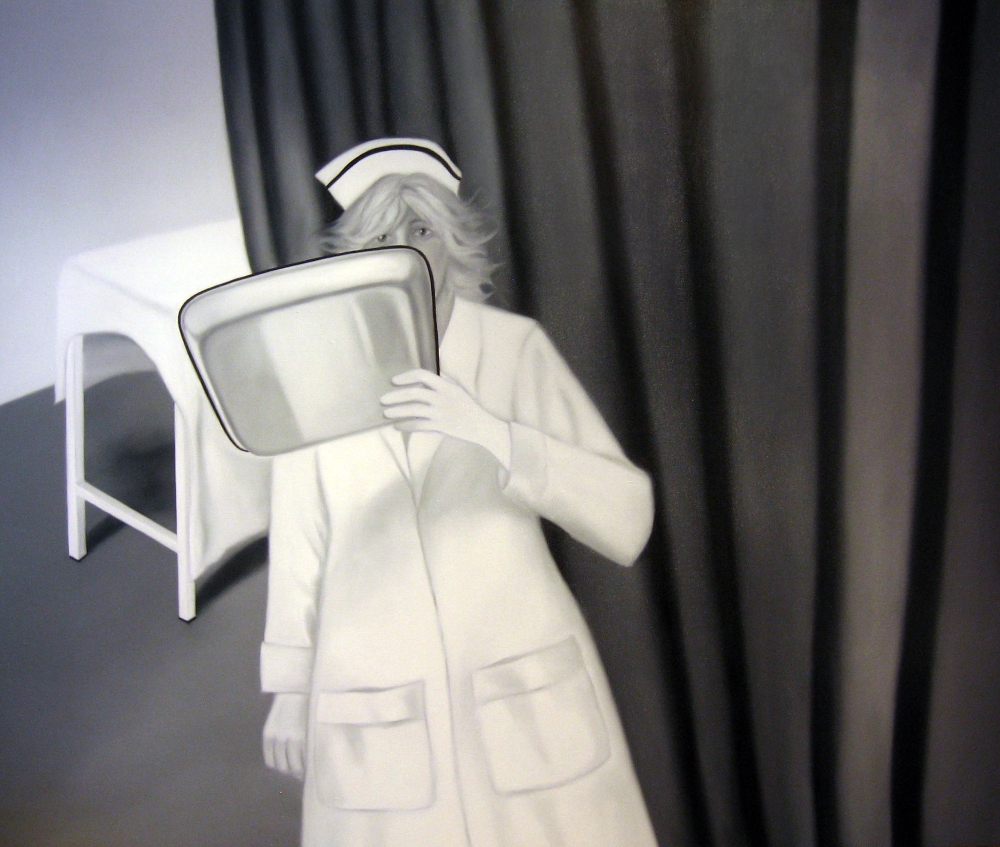
Welcome to the Morgue, 2013, Oil on canvas
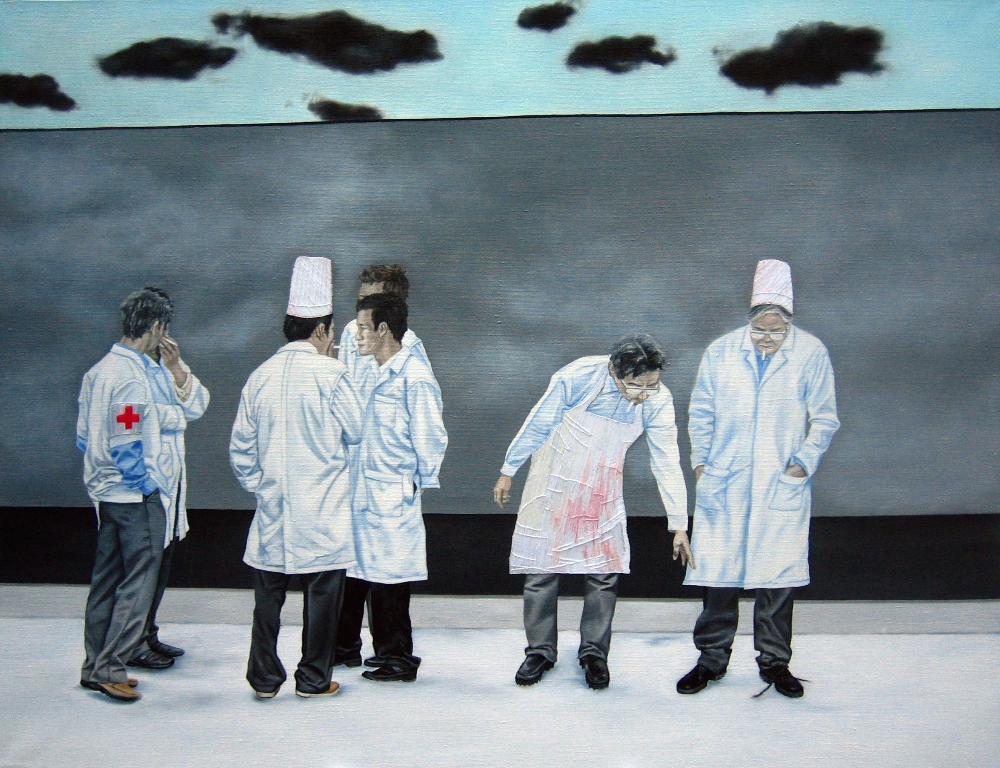
White Commando, 2013, Oil on canvas, embroidery
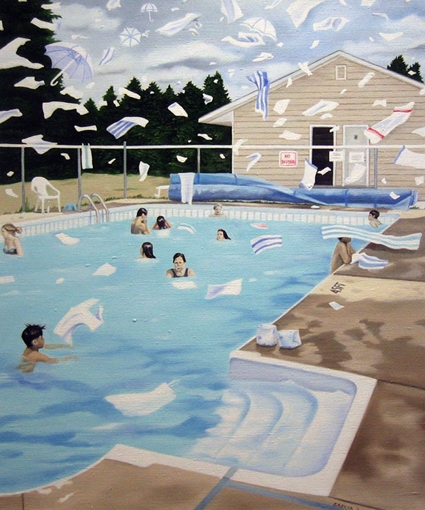
Hail on His Birthday, 2011, Oil on canvas

No Innocent Memories, 2012, Oil on canvas
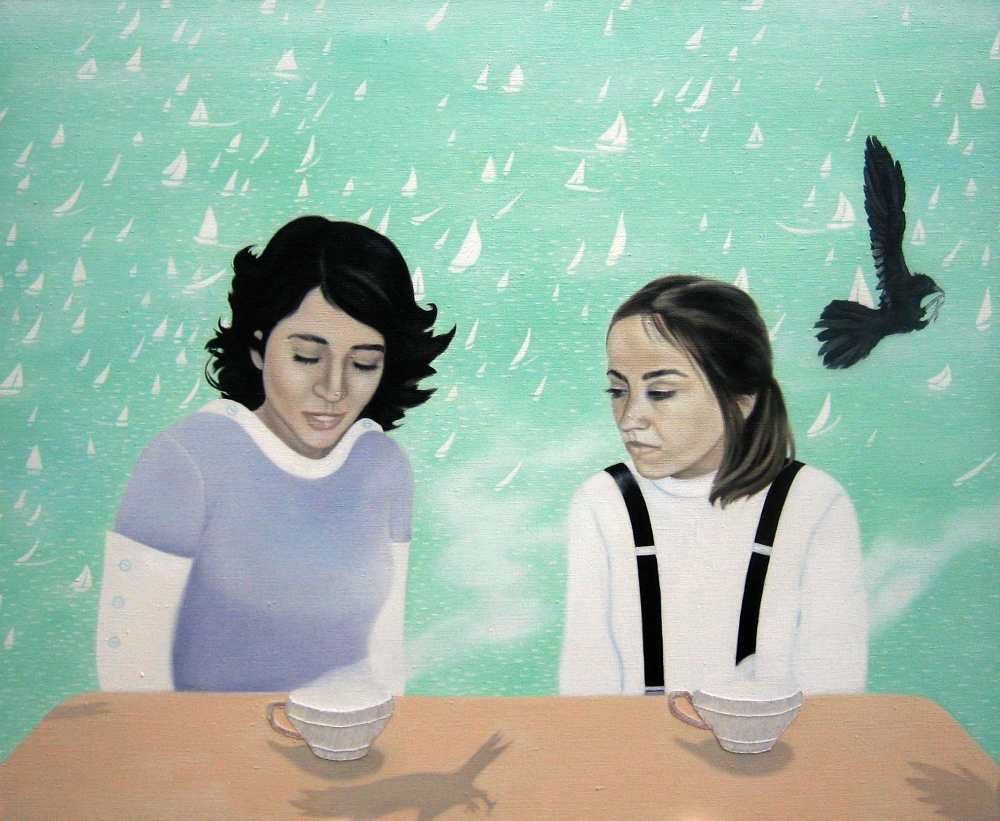
Antivirus System, 2012, Oil on canvas, embroidery
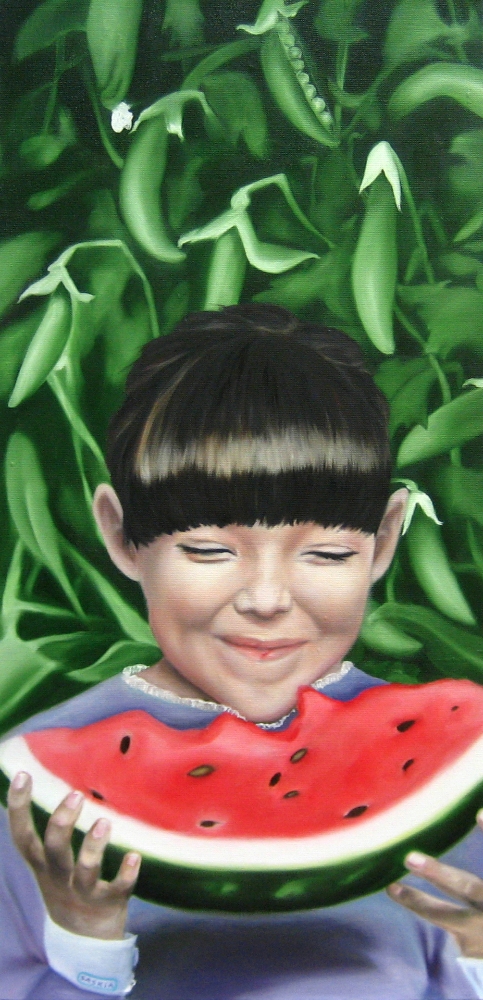
Unclear Extent of Effect, 2009, Oil on canvas
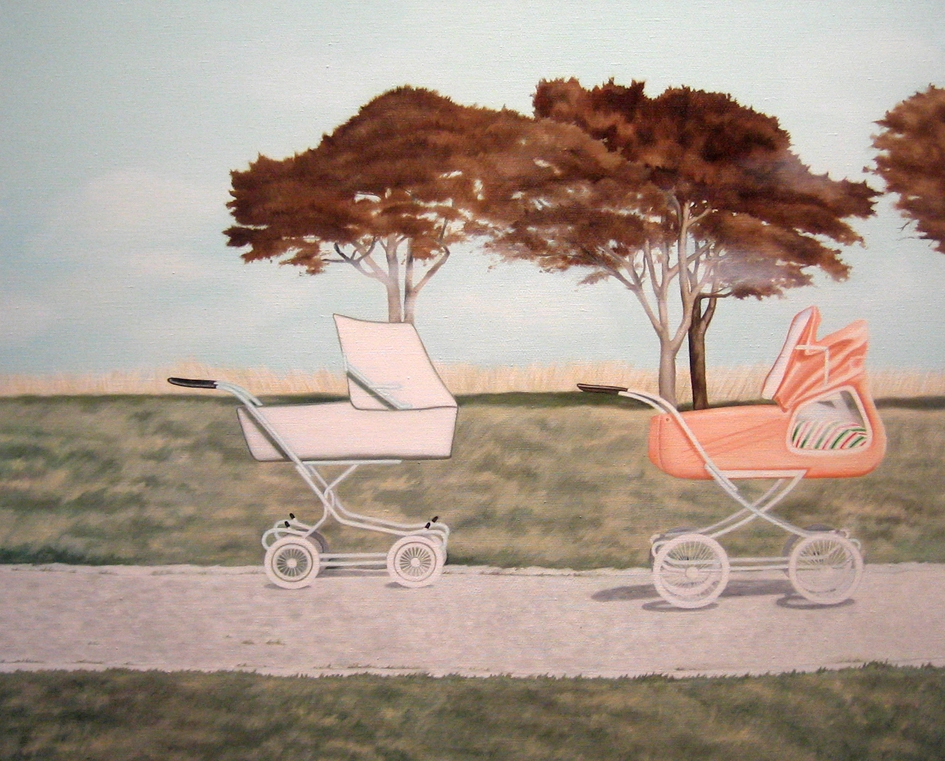
Heavy Weaponry, 2012, Oil on canvas
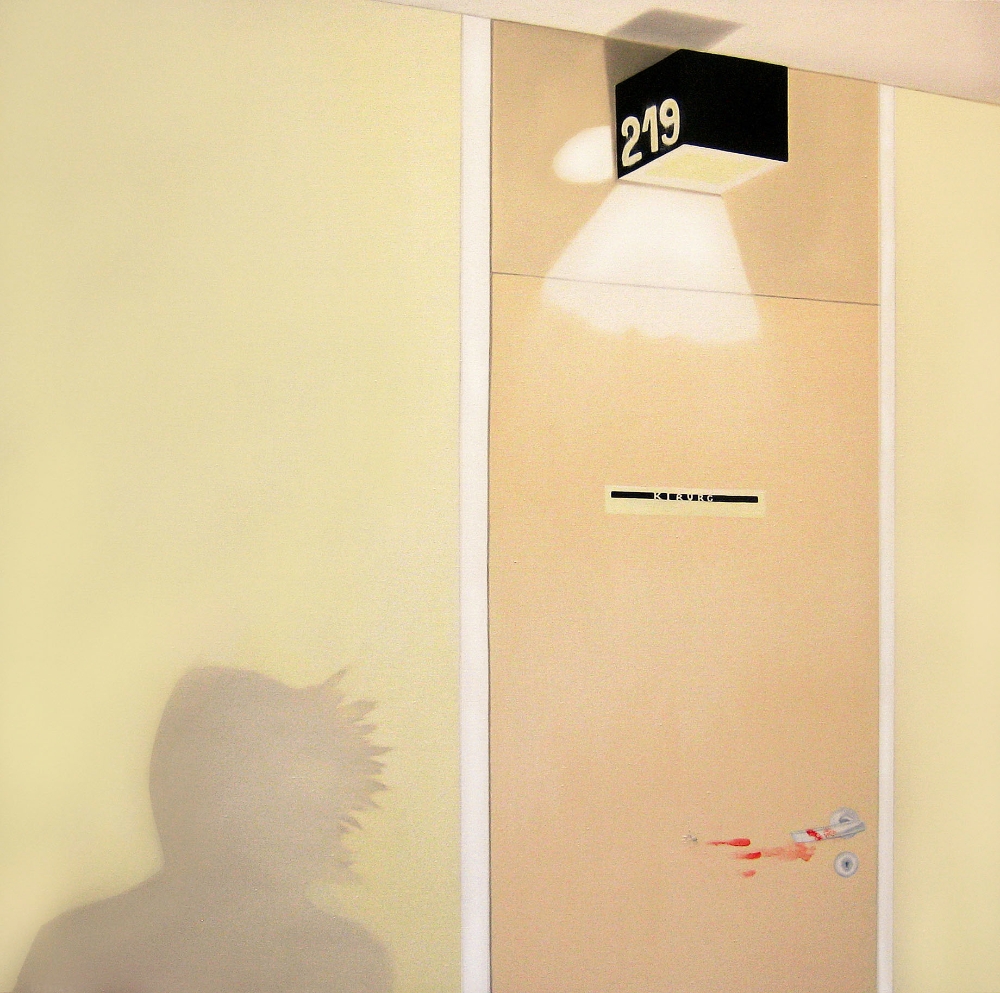
Growing Admiration Towards Extraordinary, 2012, Oil on canvas, embroidery
Photographs by Saskia Järve
